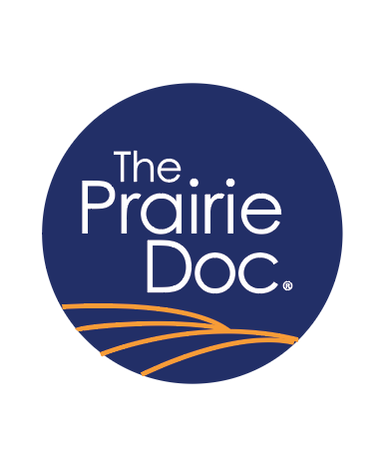|
Prairie Doc Perspective Week of April 28th, 2024
Based on Science, Built on Trust By Jill Kruse, DO As we approach the end of our 22nd season, I would like to thank our audience for trusting us to bring them health information that is current and accurate. There are many doctors out there who cannot make the same claims as the Prairie Doc’s and I would like to take this opportunity to help sort out those charlatans and quacks from trusted sources of health information. While tasty and refreshing, I would not trust Dr. Pepper for medical advice. Nor would I trust Dr. Evil from Austin Powers, despite his claims that he went to “four years of Evil Medical School”. I like to read Dr. Seuss’ books, but I would not let him take a look. While I think he is a dear, I would not let him peek in my ear. He is not the doctor that I want to see if I needed an appendectomy. While you can trust Doc Martin and his shoes to help you look cool, I am certain he has no medical training. Doc Brown from Back to the Future is another doctor I’m not sure I would listen to. Beside the fact that he likely has a PhD rather than an MD/DO degree, can you really trust someone who would make a time machine out of a Delorian? “The Doctor” from Doctor Who, is someone whom his companions trust with their life. Unfortunately a sonic screwdriver will not replace a stethoscope for making a medical diagnosis. The Doctor has also been known to put those companions in grave danger from Darleks and Cybermen. Although Dr. Steven Strange from the Marvel Universe is a legitimate doctor by training, I suspect he allowed his license and board certification to lapse when he became an Avenger. Thus he would not be my first choice for current medical advice or treatment. Similarly, I would not let Doc Octo, a known villain from the Spider-Man series, use any of his mechanical arms examine me. Dr. Benjamin Franklin Pierce, aka “Hawkeye”, from M.A.S.H. was an excellent surgeon, but his treatments and techniques are decades out of date. We have come a long way in surgery and anesthesia since the Korean War. I would also trust Dr. Quinn, Medicine Woman, but only if I was living back in the 1800’s on the prairie. The current Prairie Docs have much more training and knowledge than she had access to at the time. As you can see, there are many doctors out there. However, when looking for medical advice, you need not only someone you can trust, but also someone who has the training to give you the most current and up to date advice. The Prairie Docs strive to answer your medical questions each week with such information. So tune in and ask anything. We are here to help you stay healthy out there, with health information that is based on science and built on over twenty years of trust. Jill Kruse, D.O. is part of The Prairie Doc® team of physicians and currently practices as a hospitalist in Brookings, South Dakota. Follow The Prairie Doc® at www.prairiedoc.org and on Facebook and Instagram featuring On Call with the Prairie Doc®, a medical Q&A show providing health information based on science, built on trust, on SDPB and streaming live on Facebook most Thursdays at 7 p.m. central. Prairie Doc Perspective Week of April 21st, 2024
“Dry skin? Join the club” By Kelly Evans-Hullinger, MD An exceedingly common question I get in clinic, especially in the heart of a South Dakota winter, is how to remedy dry skin. And the questions aren’t just in clinic; my own kids, family, friends, everyone seems to have an occasional problem with dry and irritated skin. Dry skin is something we are all familiar with; if your dry spots come with a rash or anything else unusual, it may be worth showing it to your primary care provider, as it could be something else entirely. Eczema, a common inflammatory skin condition, often goes along with and is made worse by dryness. Soothing your dry skin doesn’t have to be fancy or expensive. There are a handful of tricks we can all use to help ourselves when it comes to dryness. The first advice is to avoid things that cause your skin to become drier. For many, that means to bathe less. That’s right; I said it: bathe less. Every time you bathe or shower, it washes away natural oils on the skin. Often our instinct when our skin becomes irritated is to wash it more, but in this case more is not better. Of course, I’m not asking you to forego hygiene entirely. But most people can probably bathe every other or every third day. This is especially true of babies and kids who struggle with eczema – cut down the daily baths. When we do bathe or shower, we can modify factors that will worsen dry skin. The hotter the water, the drier the skin afterward, so try lowering the temperature a bit. Less time spent in the bath or shower can help. And be mindful of the soap or cleanser you use – to reduce dryness, use less soap and a gentler soap. For kids who love the tub, skip the bubble bath and just put some gentle soap on a washcloth at the end of the bath when it is time to wash up. After that bath or shower, how do you choose from the hundreds of creams or lotions out there claiming to soothe dry skin? The dermatologists I know love products with petroleum jelly (i.e. Vaseline®) for dry skin; remember, I said this didn’t need to be fancy! Stick with fragrance-free products and keep it simple. Whatever you choose, slather it on as soon as the skin is dry. Dry skin affects many of us, but I hope these tips will help the next time you find yourself irritated with this common condition. Kelly Evans-Hullinger, M.D. is part of The Prairie Doc® team of physicians and currently practices internal medicine in Brookings, South Dakota. Follow The Prairie Doc® at www.prairiedoc.org and on Facebook featuring On Call with the Prairie Doc® a medical Q&A show providing health information based on science, built on trust, streaming live on Facebook most Thursdays at 7 p.m. central. Prairie Doc Perspective Week of April 14th, 2024
"Reflecting on Progress” By Debra Johnston, MD It’s human nature to tell stories about the past, and doctors aren’t immune to that impulse. The second year medical students rotating through my clinic have me reflecting on my own years as a fledgling physician, and the changes I’ve seen in my decades of practice. I remember one late evening spent in the PICU watching over a toddler who had meningitis. At one point I turned and bumped into a bedrail, which came crashing down. Both my preceptor and I jumped, and I probably even shrieked. The child, however, didn’t even blink. That’s when we knew her illness had left her profoundly deaf. The seasoned pediatrician I was with that month had started practice before the introduction of the Hib vaccine. As we talked about what we could do now for the child in our care, he told me stories from “the old days”, when the PICU at Sioux Valley Hospital would perpetually have 2 or 3 children being treated for meningitis. Less than 10 years later, our unimmunized patient was the first case they’d had in months. Early in my own practice, winter months would see at least a child or two here in Brookings hospitalized with rotavirus on any give day, and the occasional adult. They would be with us for a few days or even a week, getting IV fluids until the diarrhea slowed down. Our first vaccine had rare but serious side effects and was pulled off the market. The vaccine we’ve been using for nearly 20 years now has turned the illness into something that rarely lands a child in our hospital. To be sure, we still see rotavirus infections. It’s just that far fewer patients are so sick that they require IVs. This last year, we got a new weapon against another common childhood scourge. RSV has been a terror for longer than I’ve been in practice. It results in the hospitalization of nearly 2% of children before they turn 1. We now have two ways to protect infants. The first is a traditional vaccine given to expectant mothers later in their pregnancy. Mom’s immune system responds by developing antibodies, which are transferred to the infant. Since babies’ immature immune systems can’t respond to the vaccine we have for RSV, we can’t give them that vaccine. However, we have an antibody against RSV that can be given directly to newborns. We’ve had something similar for most of my career, but it was expensive and had to be given monthly, so we only used it in the highest risk children. This new version is much less costly, and requires only one shot. These strategies don’t teach the baby’s own immune system to fight the infection. Instead, they provide temporary soldiers to wage the battle. That protection will fade, and the baby’s immune system will still have to learn to fight RSV by catching it, but we will have delayed that day until the child is older, and less likely to get terribly sick. I am optimistic that RSV, too, will become something we still see, but that doesn’t cause the suffering it once did. And I wonder, what will my young colleagues someday tell their future students about medicine in “the old days?” Debra Johnson, M.D. is part of The Prairie Doc® team of physicians and currently practices family medicine in Brookings, South Dakota. Follow The Prairie Doc® at www.prairiedoc.org and on Facebook featuring On Call with the Prairie Doc® a medical Q&A show providing health information based on science, built on trust for 22 Seasons, streaming live on Facebook most Thursdays at 7 p.m. central. Prairie Doc Perspective Week of April 7th, 2024
“Pain - It’s No Joke” By Jill Kruse, DO There is an old joke where a man walks into his doctor’s office and says, “Doc, it hurts every time I do this. What should I do? To which the doctor replies, “Simple, don’t do that!” While the advice seems trite and maybe even insulting, like most jokes, there is some truth in it. Pain is one of the ways your body tries to protect you from even worse injury. Pain tries to keep you from walking on a sprained ankle or lifting things with a broken arm. In those cases, the advice from the doctor is accurate. We cast broken bones to immobilize them, and use splints or slings to rest muscle strains or sprained tendons. In these cases, excessive movement can make injuries worse. That break could go from well aligned, where the bone can heal on its own, to displaced where the broken fragments are now too far apart to heal and reattach properly. This could mean the difference between just having a splint or cast, to needing surgery with plates, pins, or screws to realign and stabilize the broken pieces of bones. People who have decreased sensation due to neuropathy also are at risk for having something minor become a major injury. In neuropathy, the nerves do not send a signal when a pebble is caught in your sandal. That small pebble could continue to rub throughout the day and lead to a large blister or even an ulcer. Neuropathy can also cause pain on its own as misfiring nerves cause pins and needles or a burning sensation, even when there is no external cause for the pain. Another condition called Reflexive Sympathetic Dystrophy, or RSD, is where the nerves are stuck in a loop sending pain signals to the brain long after the initial injury occurred. This is a very difficult condition to treat. Fibromyalgia also is a condition where widespread pain occurs with no obvious external cause. For these people, the advice from the joke is not helpful. The typical pain medications used for broken bones or sprained ankles are also less effective. For patients with RSD or fibromyalgia, light activity with guidance from a physical therapist can sometimes help with their pain. However, too much activity can flare their condition and leading them to need hours or days to recover back to their baseline. Unfortunately, sometimes pain cannot be completely removed or fully treated. The goal then changes from trying to remove the pain, to trying to remove the suffering associated with the pain. Ways of dealing with chronic pain need to be explored, such as chronic pain support groups or counseling. Pain specialists can also be a good resource for these people, as they have more pain interventions than a primary care physician. So the next time you have pain, don’t be afraid to talk about it with your doctor, because living with pain is no joke. Jill Kruse, D.O. is part of The Prairie Doc® team of physicians and currently practices as a hospitalist in Brookings, South Dakota. Follow The Prairie Doc® at www.prairiedoc.org and on Facebook and Instagram featuring On Call with the Prairie Doc®, a medical Q&A show providing health information based on science, built on trust, on SDPB and streaming live on Facebook most Thursdays at 7 p.m. central. |
Archives
July 2024
Categories |
 RSS Feed
RSS Feed


